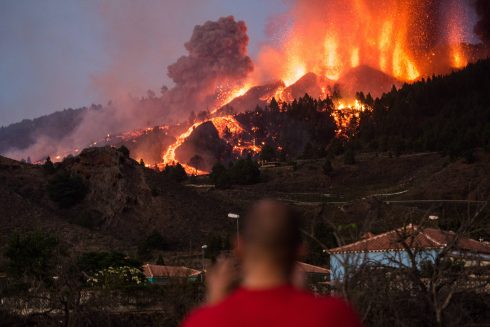THE main Spanish group leading the charge against the Eastside development has denied it is ‘just another hostile anti-Gibraltar voice from Spain’.
Environmentalists Verdemar Ecologistas en Accion has regularly denounced the £340 million marina project on the Rock’s Mediterranean side.
The group recently said it was a ‘disgrace’ that it was left up to them to ‘defend the interests of Andalucia and Spain’.
However, spokesman Antonio Muñoz Secilla told the Olive Press that the group was not motivated by grinding the nationalist axe.

“We are not interested in questions of sovereignty or litigating who owns territorial waters,” Muñoz said.
“The environment has no borders. We denounce landfills and other environmental violations in Spain just as quickly as in Gibraltar.
“Verdemar is fighting the stone dumping that Gibraltar is carrying out just as we did during the expansion of the Port of Algeciras.
“We denounced the 700,000 square metres that were reclaimed in the Bay of Algeciras to build that port over several years.”

Verdemar has also complained about the ‘suspicious silence’ from the Spanish foreign ministry over its denuncias in Madrid against the Eastside project.
“We believe that economic interests may explain why there is so much silence from the main political parties in Spain,” Muñoz added.
Gibraltar has imported almost 50,000 tons of rock dug up from quarries in Spain, according to the group, which they claim is damaging protected habitats and archeological sites.
“Not only is the Eastern Strait conservation zone being affected, but also the Sierra de la Utrera, the Manilva River and its habitats protected by European legislation, such as the Hedionda baths, are in danger,” the group complained.
“There are important archaeological sites that show the presence of communities in the area during the Lower Paleolithic, more than 200,000 years ago.
“There are at least 92 caves, 23 of which show human occupation, with traces of the Mesolithic and Neolithic ages, as well as representations of rock art, which is why the Hediondas Underground System was declared a Site of Cultural Interest in 2014.
“In the area of ??the Torcal there is also the archaeological site of Villavieja, occupied since the 2nd millennium BC, whose populations maintained contact with the first Phoenician sailors who came to settle in this area of ??the Mediterranean.








